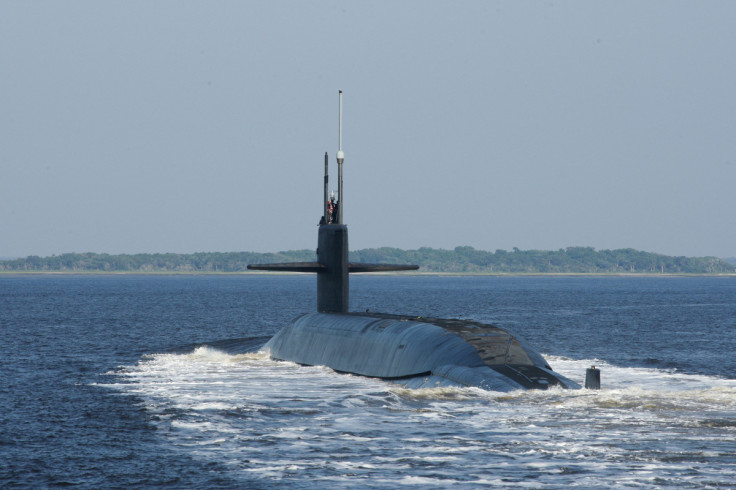Elusive US Submarines Can Be Tracked By Existing Detection System, Says Chinese Study

KEY POINTS
- A study in a Chinese peer-reviewed journal highlighted the potential of detecting advanced submarines
- The U.S. boasts of highly sophisticated submarines with advanced acoustic and vibration-dampening systems
- China, using existing technology, can potentially jeopardize the U.S. dominance in oceanic warfare, the study says
Advanced submarines can be detected by using prevailing Chinese technology, something that can potentially pose a challenge to the United States oceanic supremacy, a study published in a peer-reviewed Chinese journal said.
The U.S. is reputed to possess some of the most elusive submarines, equipped with intricate acoustic and vibration-dampening mechanisms, making it hard to detect as it will blend with the noise of the ocean.
In April, Carl Schuster, a retired U.S. Navy captain and former director of operations at the Pacific Command's Joint Intelligence Center in Hawaii, conveyed to CNN that "submarines are one area where the United States retains unchallenged superiority over China."
However, the study conducted by researchers from the Fujian Institute of Research on the Structure of Matter, part of the Chinese Academy of Sciences, has revealed an extraordinarily sensitive magnetic detection system could potentially capture minute indications of even the most advanced submarines, detecting them from considerable distances, according to South China Morning Post.
Under the guidance of Zou Shengnan, the research team employed computer simulations to ascertain the feasibility of detecting the almost inconspicuous bubbles generated by a high-speed nuclear-powered submarine.
The outcome of their efforts, as detailed in the paper published on Aug. 1 in the Chinese Journal of Ship Research, presents a novel approach that offers a fresh avenue for submarine detection and monitoring. This journal is overseen by the China Ship Scientific Research Center, an institution known for its pioneering advancements in ship and ocean engineering.
The research team's calculations indicated that the extremely low frequency signal emitted by the bubbles created by a submarine could potentially surpass the sensitivities of advanced magnetic anomaly detectors by a magnitude ranging from three to six orders of magnitude.
"The magnitudes of the induced electric field and magnetic field are ... well within the detection range of some top-notch sensors," the paper said.
These bubbles emerge as an unavoidable outcome of the submarine's cruising velocity. This motion accelerates the water flow around the hull, amplifying its kinetic energy while diminishing its potential energy, thereby translating into reduced pressure.
Zou and her team assert that their discoveries can additionally serve as a guideline for determining optimal "electromagnetic communication frequencies for high-speed submarines."
© Copyright IBTimes 2024. All rights reserved.





















